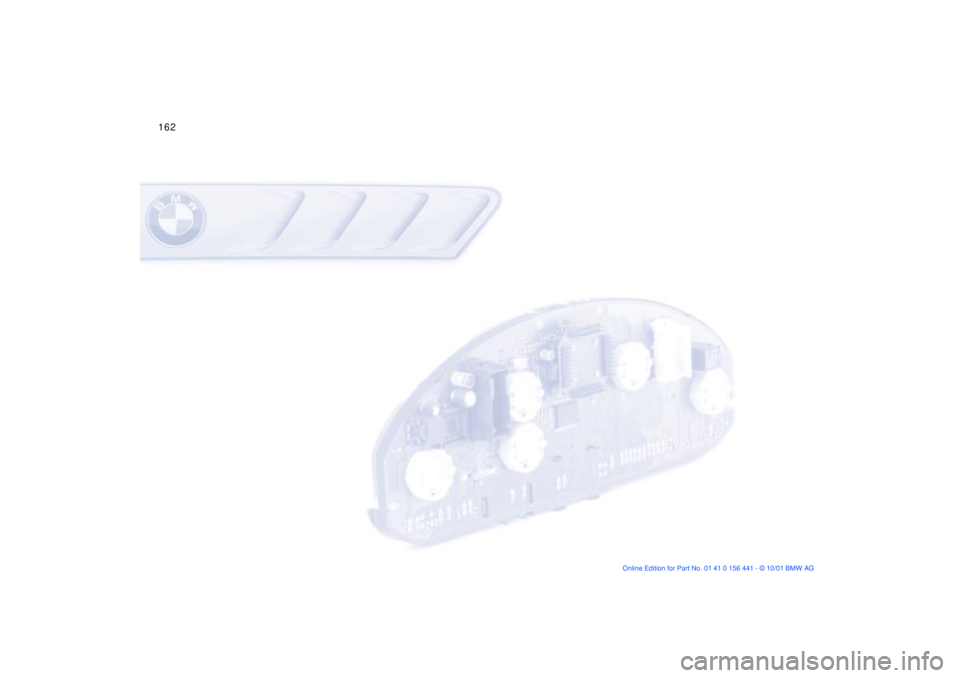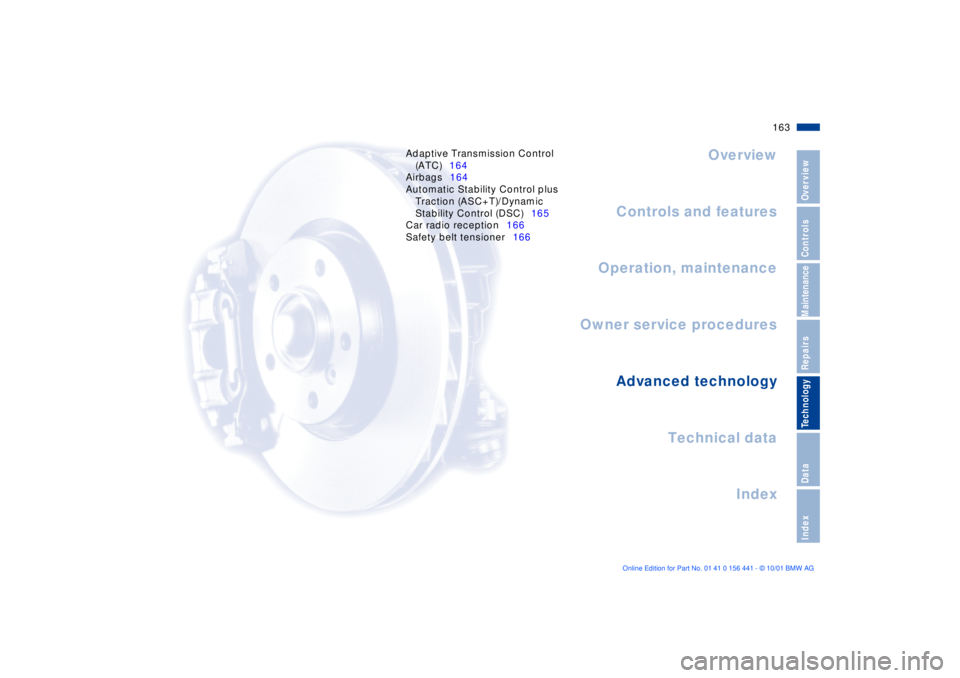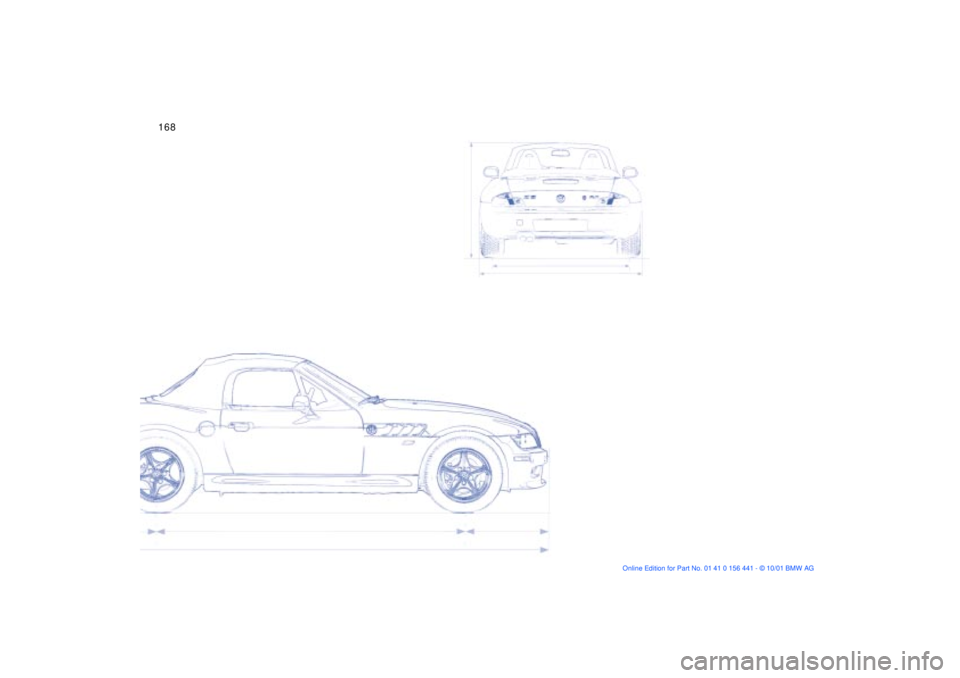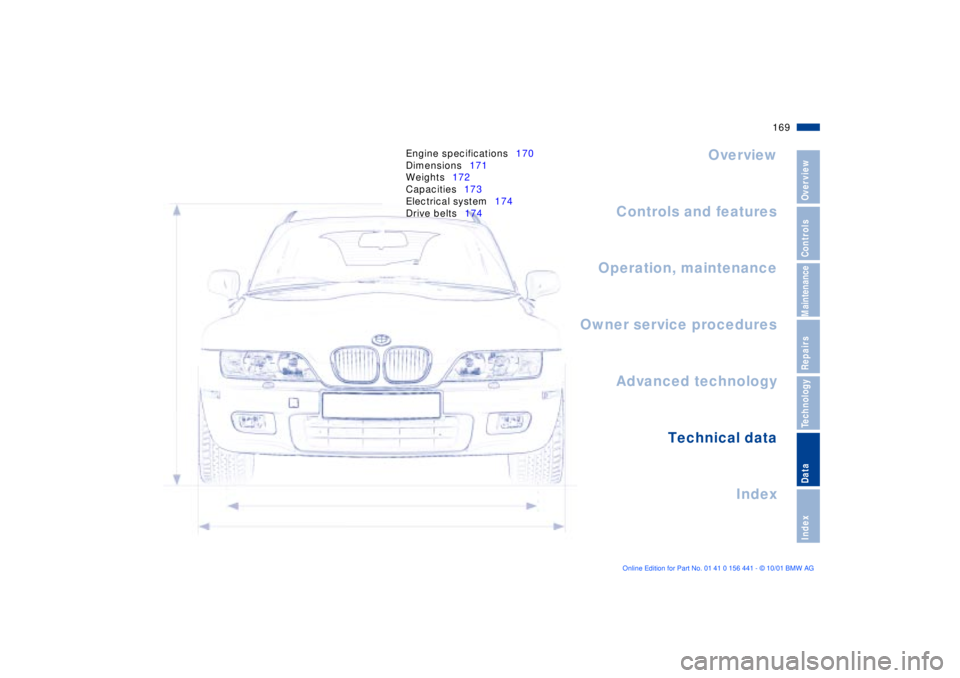BMW Z3 2002 Owners Manual
Manufacturer: BMW, Model Year: 2002,
Model line: Z3,
Model: BMW Z3 2002
Pages: 187, PDF Size: 2.73 MB
BMW Z3 2002 Owners Manual
Z3 2002
BMW
BMW
https://www.carmanualsonline.info/img/1/94697/w960_94697-0.png
BMW Z3 2002 Owners Manual
Trending: engine oil, radio, wiring, jump cable, air condition, brake pads replacement, diagram
Page 161 of 187
161n
IndexDataTechnologyRepairsMaintenanceControlsOverview
Page 162 of 187
Page 163 of 187
Overview
Controls and features
Operation, maintenance
Owner service procedures
Technical data
Index Advanced technology
163n
IndexDataTechnologyRepairsMaintenanceControlsOverview
Adaptive Transmission Control
(ATC)164
Airbags164
Automatic Stability Control plus
Traction (ASC+T)/Dynamic
Stability Control (DSC)165
Car radio reception166
Safety belt tensioner166
Technology
Page 164 of 187
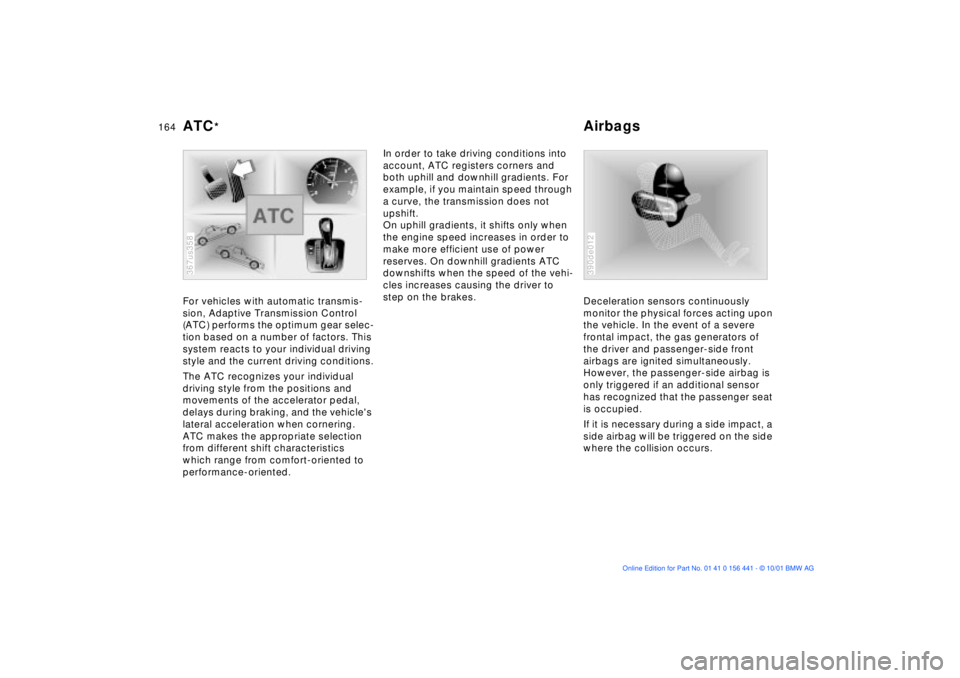
164n
For vehicles with automatic transmis-
sion, Adaptive Transmission Control
(ATC) performs the optimum gear selec-
tion based on a number of factors. This
system reacts to your individual driving
style and the current driving conditions.
The ATC recognizes your individual
driving style from the positions and
movements of the accelerator pedal,
delays during braking, and the vehicle's
lateral acceleration when cornering.
ATC makes the appropriate selection
from different shift characteristics
which range from comfort-oriented to
performance-oriented.
367us358
In order to take driving conditions into
account, ATC registers corners and
both uphill and downhill gradients. For
example, if you maintain speed through
a curve, the transmission does not
upshift.
On uphill gradients, it shifts only when
the engine speed increases in order to
make more efficient use of power
reserves. On downhill gradients ATC
downshifts when the speed of the vehi-
cles increases causing the driver to
step on the brakes.
Deceleration sensors continuously
monitor the physical forces acting upon
the vehicle. In the event of a severe
frontal impact, the gas generators of
the driver and passenger-side front
airbags are ignited simultaneously.
However, the passenger-side airbag is
only triggered if an additional sensor
has recognized that the passenger seat
is occupied.
If it is necessary during a side impact, a
side airbag will be triggered on the side
where the collision occurs.
390de012
ATC
*
Airbags
Page 165 of 187

165n
IndexDataTechnologyRepairsMaintenanceControlsOverview
The airbags located under the marked
covers inflate and unfold in a matter of
a few milliseconds. In this process they
tear through the designed breaking
points of the upholstered covers or
press them out.
Because the inflation process must be
virtually instantaneous, it is necessarily
accompanied by a certain amount of
ignition and inflation noise. The gas
required to inflate the airbags is not
dangerous, and it dissipates together
with the associated smoke.
The entire process is completed within
fractions of a second.Precision sensors monitor the number of
revolutions of the wheels. When
equipped with DSC, they also monitor
steering angle, lateral acceleration,
brake pressure and the movement of the
vehicle around its vertical axis.
If differences in the wheel speeds occur,
ASC+T recognizes the danger of wheel-
spin and reduces the drive torque. If
necessary, the system also responds
with additional applications of the brakes
at the rear wheels.
In addition, DSC permanently monitors
the vehicle's current operating condition
and compares it with an ideal condition
that is calculated from the sensor's
signals. If deviations from this occur
(understeering or oversteering, for
instance), DSC can stabilize the vehicle
in fractions of a second by adjusting
engine output and with the assistance of
braking intervention at individual wheels.
Within physically possible limits
dangerous skids can be prevented even
as they are just beginning.You may need some time to become
accustomed to this system's interven-
tion. However, it provides optimum
propulsive force and driving stability.
The braking intervention may be accom-
panied by a certain degree of noise.Airbags ASC+T/DSC
*
Page 166 of 187
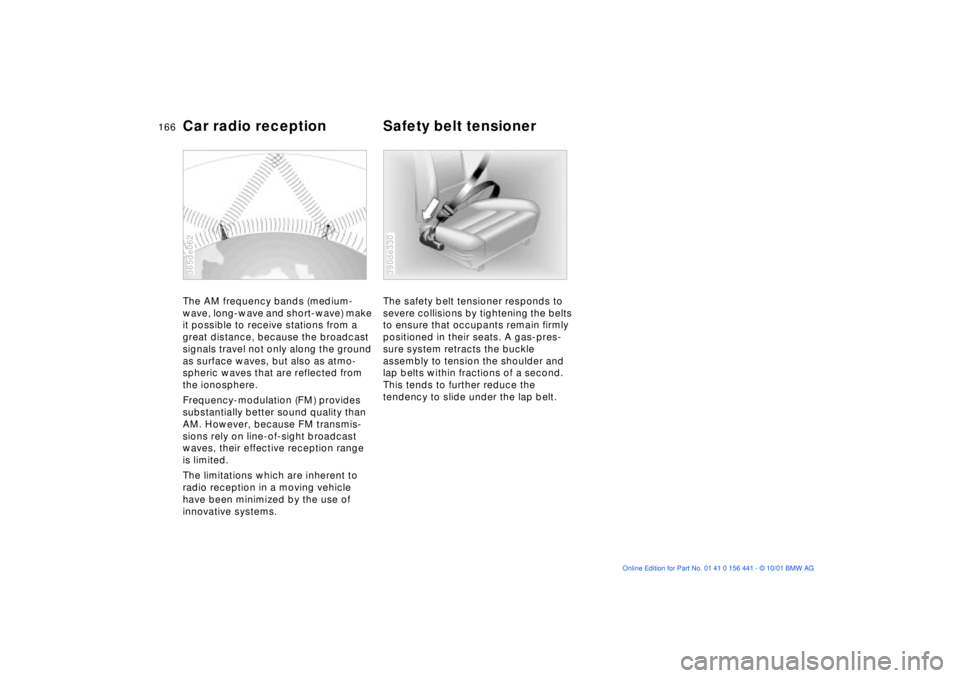
166n
Car radio reception Safety belt tensionerThe AM frequency bands (medium-
wave, long-wave and short-wave) make
it possible to receive stations from a
great distance, because the broadcast
signals travel not only along the ground
as surface waves, but also as atmo-
spheric waves that are reflected from
the ionosphere.
Frequency-modulation (FM) provides
substantially better sound quality than
AM. However, because FM transmis-
sions rely on line-of-sight broadcast
waves, their effective reception range
is limited.
The limitations which are inherent to
radio reception in a moving vehicle
have been minimized by the use of
innovative systems.365de062
The safety belt tensioner responds to
severe collisions by tightening the belts
to ensure that occupants remain firmly
positioned in their seats. A gas-pres-
sure system retracts the buckle
assembly to tension the shoulder and
lap belts within fractions of a second.
This tends to further reduce the
tendency to slide under the lap belt.390de330
Page 167 of 187
167n
IndexDataTechnologyRepairsMaintenanceControlsOverview
Page 168 of 187
Page 169 of 187
Overview
Controls and features
Operation, maintenance
Owner service procedures
Technical data
Index Advanced technology
169n
IndexDataTechnologyRepairsMaintenanceControlsOverview
Engine specifications170
Dimensions171
Weights172
Capacities173
Electrical system174
Drive belts174
Data
Page 170 of 187
170n
Z3 roadster 2.5i Z3 roadster 3.0i,
Z3 coupe 3.0i
Displacement
Number of cylinderscu. in (cm
m) 152.2 (2,494)
6181.8 (2,979)
6
Maximum power output
at engine speedhp
rpm184
6,000225
5,900
Maximum torqueat engine speedlb-ft (Nm)
rpm175 (237)
3,500214 (290)
3,500
Compression ratioe 10.5 10.2
Stroke
Borein (mm)
in (mm)2.95 (75.0)
3.31 (84.0)3.53 (89.6)
3.31 (84.0)
Fuel-injection system Digital electronic engine-management systemEngine specifications
Trending: oil change, ABS, battery location, window, diagram, height adjustment, clock

